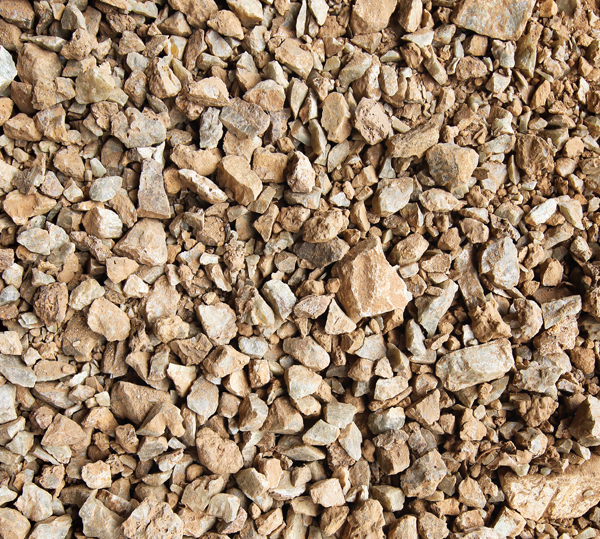
Millions of years ago a volcano burst in angry orange-red flames spewing forth a stream of thick lava. Exposed to acid rains, sunshine, air and a multitude of external forces, the lava cooled and solidified into phosphate rocks. Today, Lanka Phosphate mines these rocks in the Eppawala area for phosphate.
Words Chamindra Warusawitharane Photographs Indika de Silva and Damith Wickramasinghe
The Mines
Eager to witness the mining, crushing and all the minute details that go in to producing rock phosphate we set off to the Eppawala mines in Anuradhapura. It was a fair weather day and we trudged along a carpeted road towards the mines.
Phosphate Is A Pale Blue Mineral And The Eppawala Deposit Contains Phosphate Crystals And Rocks.
The tall rocks jutting out from the banks of red-brown hills told us we had reached the phosphate deposits. Phosphate is a pale blue mineral and the Eppawala deposit contains phosphate crystals and rocks. Jutted rocks we saw were called extrusive igneous rocks meaning they form above the earth’s crust.
The rocks were covered in red-brown earth as well as occasional vegetation while the pale blue particles were visible underneath. At the time we reached the deposits they had mined enough rocks to last awhile therefore we missed out on a ‘perfectly delicious blast’ as my friend termed it.
Crushing
Once mined, the rocks go through a crusher which separates the crystals from the normal rocks. We watched in silence as the enormous rocks went through the crusher making an almost deafening noise. The crystals yield high-grade rock phosphate which contains 38 percent P2O5 while the rocks yield rock phosphate which contains 28 percent P2O5.
Grinding
Trucks carry the crushed loads down the same road that we climbed up to the mines. Down at the factory, there is a storage and three ‘roller mills’ to grind the rocks. Unlike the mining area where a few solitary figures worked in silence, the grinding area was a hive of activity. Men in masks and caps were busy loading the roller mills, filling the sacks with ground phosphate and sealing them.
The Three Roller Mills At Lanka Phosphate Belong To Different Times And Are At Different Performance Levels.
Once loaded and set in motion, the roller mills start grinding the phosphate rocks and crystals (separately of course) with vigour. Roller mills fed with crystals dispense a fine ivory powder while those grinding rocks dispense a fine golden brown powder. These are packed into sacks labeled HERP (High grade Eppawala Rock Phosphate) and ERP (Eppawala Rock Phosphate) respectively.
The Roller Mills
The three roller mills at Lanka Phosphate belong to different times and are at different performance levels. The oldest roller mill, called the ‘three roller mill’ produces one and a half tons of ground phosphate per hour while the ‘five roller mill’ produces five tons of ground phosphate per hour. The latest addition, the ‘six roller mill’ which was doing a test run at the time we visited is capable of producing 10 tons of ground phosphate per hour. These mills run 23 hours a day. Men at Lanka Phosphate themselves have built the ‘five roller mill’ from scratch based on the years of experience in constantly repairing and handling the oldest roller mill. We were told that the roller mills need constant servicing and repairing as crushing rocks is heavy work even for a machine.
Fertiliser
Lanka Phosphate sends the ERP and HERP to companies that produce fertilizer who hydrolyse the phosphate powder. While there is a greater demand for ERP, production for HERP was begun to substitute imported rock phosphate. At the end of this process long term crops such as tea, rubber and coconut draw essential nourishment from phosphate fertiliser, resulting in the green gold that helps to run the world.
The Crystals Yield High-Grade Rock Phosphate Which Contains 38 Percent P2O5 While The Rocks Yield Rock Phosphate Which Contains 28 Percent P25
Eppawala phosphate deposits were discovered in the year 1971 and lanka phosphate started mining in 1977.
The deposits were discovered when a government geological survey found igneous carbonate apatite. Phosphorus occurs in a limited set of minerals, mainly the apatite group.
About 90 percent of the phosphate that is mined in phosphate rock goes into fertiliser.
[nggallery id=395]

